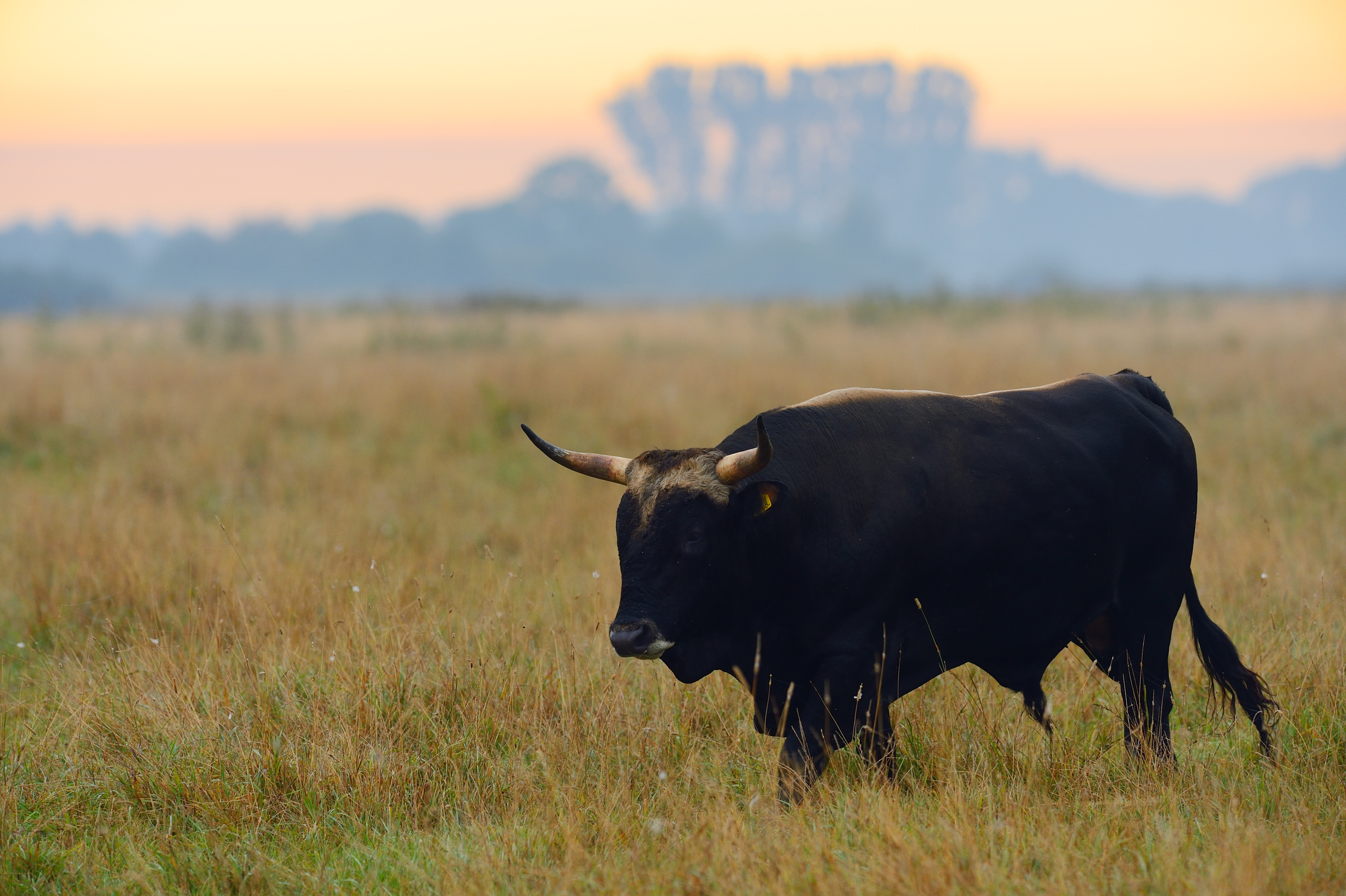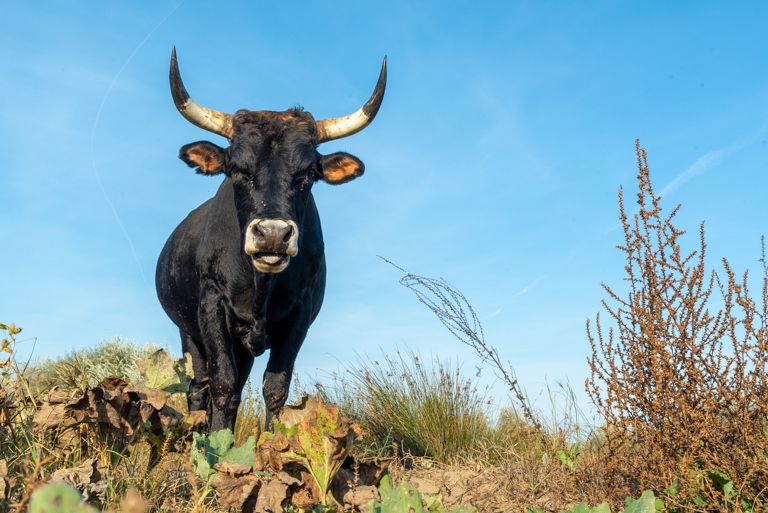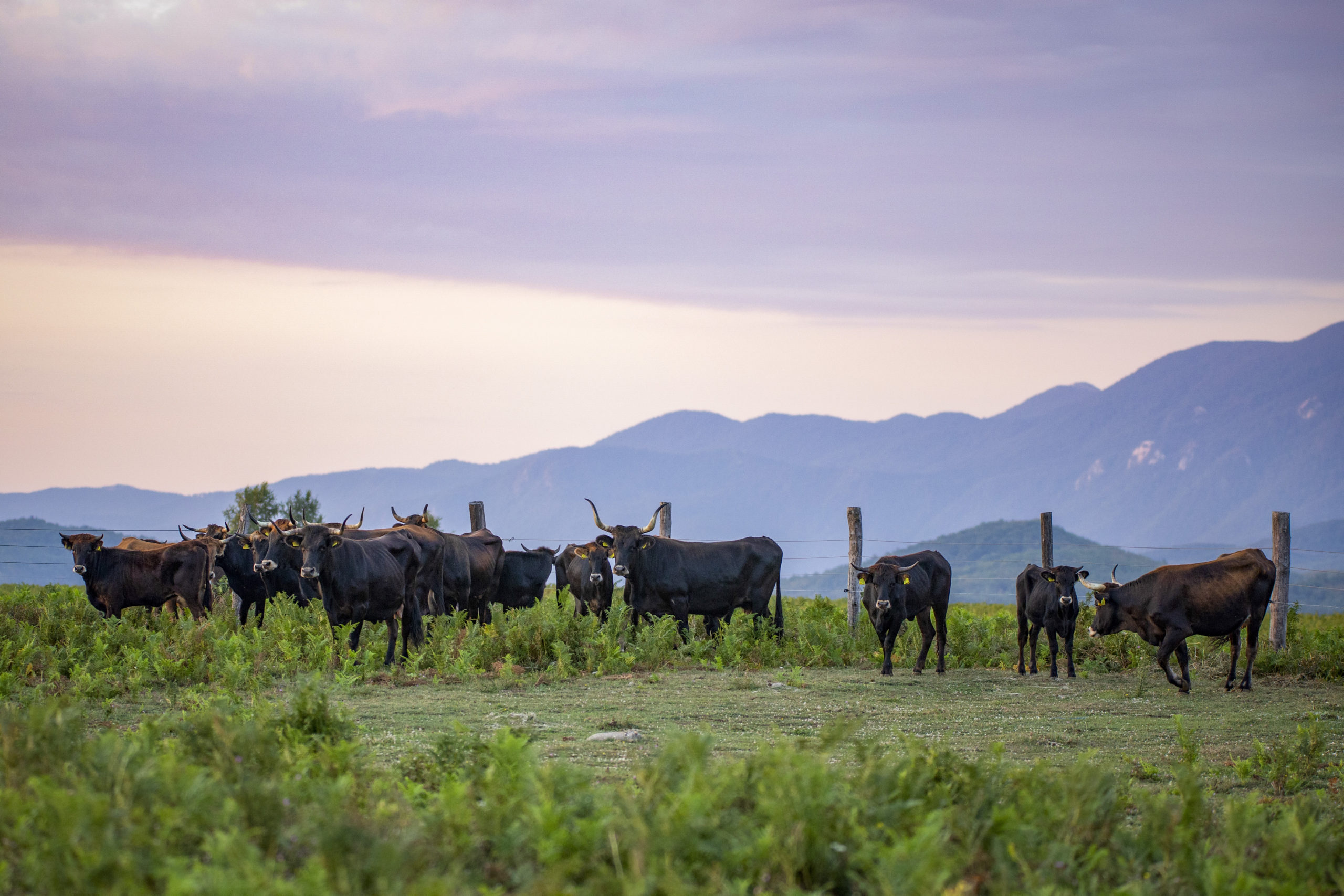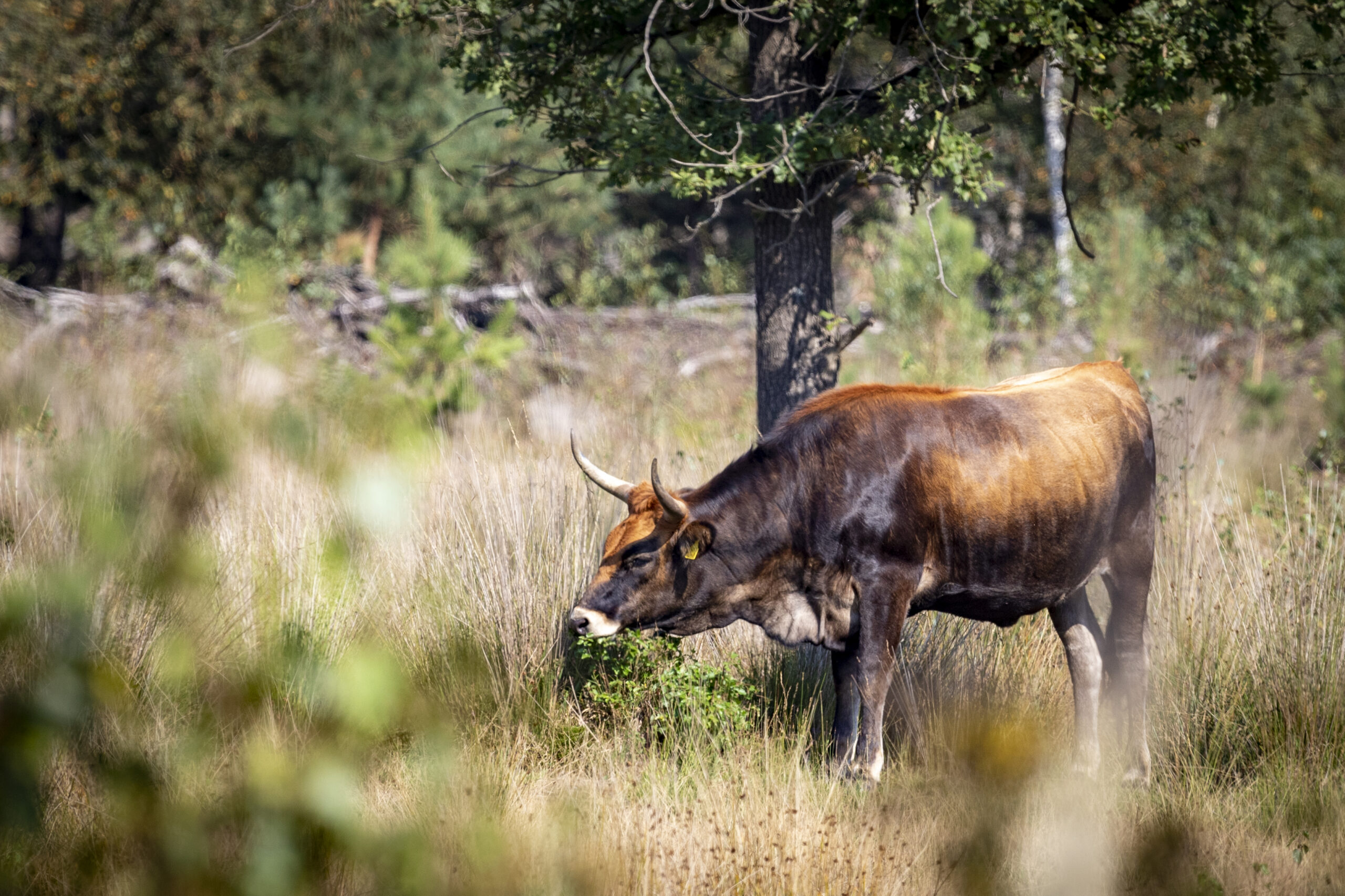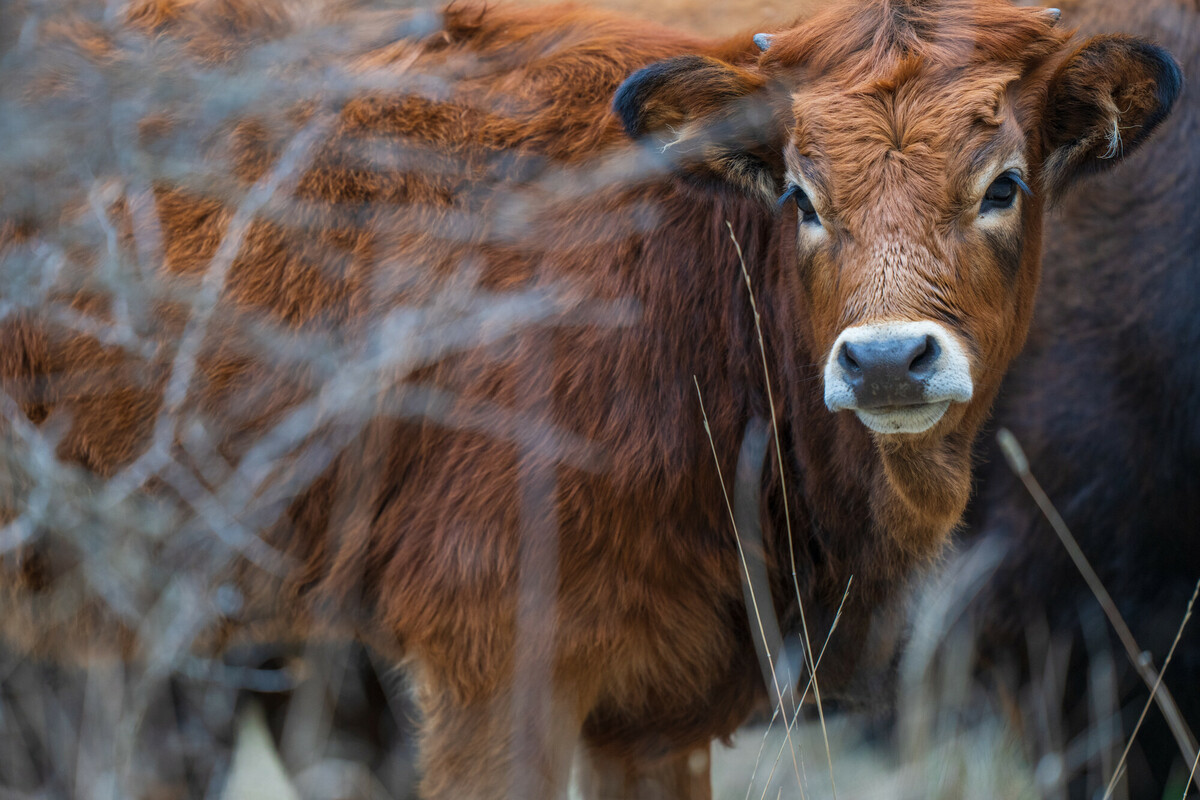The Taurus Foundation, dedicated to creating a substitute for the extinct aurochs that is best able to thrive in contemporary natural grazing schemes and wild landscapes, has become the latest organisation to join the European Rewilding Network. Julia Mata, the European Rewilding Network Coordinator, celebrated the news, saying, “This certification is long overdue. The Taurus foundation has been doing amazing work on the Tauros Programme, and we are very happy to welcome them into the European Rewilding Network.”
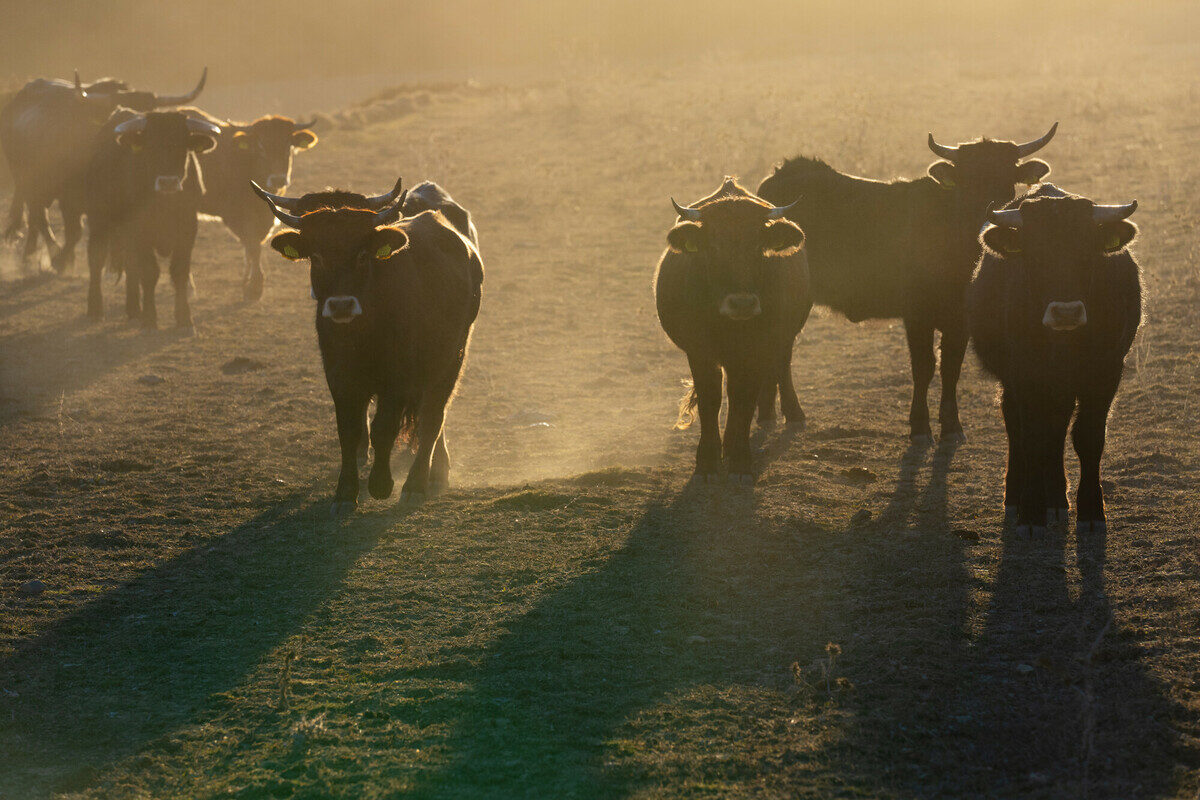
What we’re missing
We are missing wild bovines. No living cattle breed is optimally suited to survive as a free-living grazer in European wilderness areas, especially not in the recovering presence of big predators like grey wolves and brown bears. And yet, without the presence of large wild bovines, a vital niche is left unfilled in the European landscape, and the many natural processes which such megaherbivores facilitate – from vegetation disturbance to seed dispersal – cannot function as well as they might.
This niche would once have been filled by the imposing aurochs, a species which survived for more than 250,000 years in Europe until its extinction in 1627, as a result of overhunting and habitat loss. The aurochs once ranged across most of Europe, from the southern part of Scandinavia to North Africa, and from the Iberian Peninsula all the way into Central Asia. Its long, thick horns, speed and bulk provided powerful means of defence, with the animal perfectly adapted to the diversity of landscapes it inhabited, ranging from open steppes and semi-deserts to savannah-like landscapes, marshlands, forests and mountain plateaus.
Before its extinction, the aurochs would have played a significant role in shaping the ecosystems in which it lived. An aurochs bull stood almost 180 cm tall and could weigh over 1,000 kg – only the woolly rhinoceros and woolly mammoth were larger – but due to its long legs and slender build, it was nonetheless an agile animal. This large but agile animal thus played a key role in shaping its environment, disturbing vegetation, spreading seeds in its dung, creating wallows, and promoting germination of seedlings in its deep hoofprints. Everywhere it lived, the auroch’s massive physical presence and natural behaviour would have influenced countless other animal and plant species.
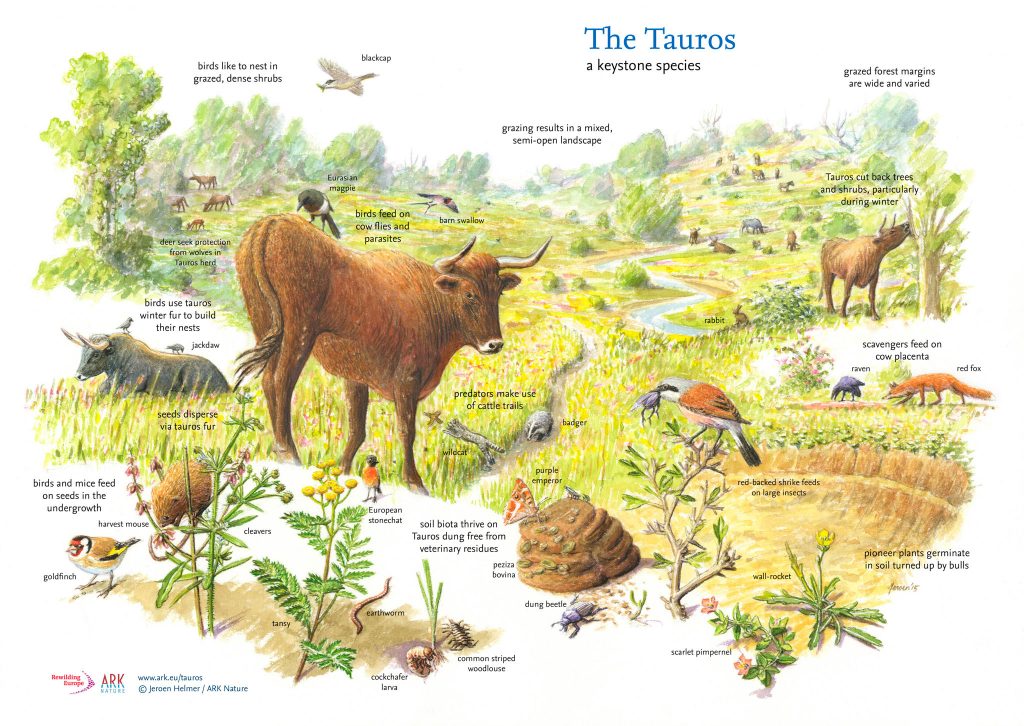
Back to the future
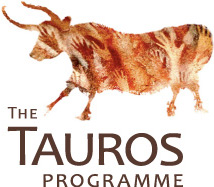 The aurochs may be gone, but the descendants of the aurochs survive as domesticated cattle. Among them are various original native breeds which preserve a lot of the genetic blueprint and characteristics of the ancient aurochs. The newest member of the European Rewilding Network – the Tauros programme – has identified the most promising candidates among these for a breeding programme, with the aim to create a modern-day equivalent of the extinct aurochs – a substitute wild bovine able to reinvigorate the many natural processes that the aurochs once contributed to.
The aurochs may be gone, but the descendants of the aurochs survive as domesticated cattle. Among them are various original native breeds which preserve a lot of the genetic blueprint and characteristics of the ancient aurochs. The newest member of the European Rewilding Network – the Tauros programme – has identified the most promising candidates among these for a breeding programme, with the aim to create a modern-day equivalent of the extinct aurochs – a substitute wild bovine able to reinvigorate the many natural processes that the aurochs once contributed to.
The principal technique being employed to achieve this mission is “back-breeding”, a process of combining cattle breeds with the physical attributes, behaviour and genetics that most closely match Europe’s original wild aurochs. This breeding programme is overseen by a multidisciplinary team including experts on genetics, ecology, molecular biology, archaeology and archaeozoology.
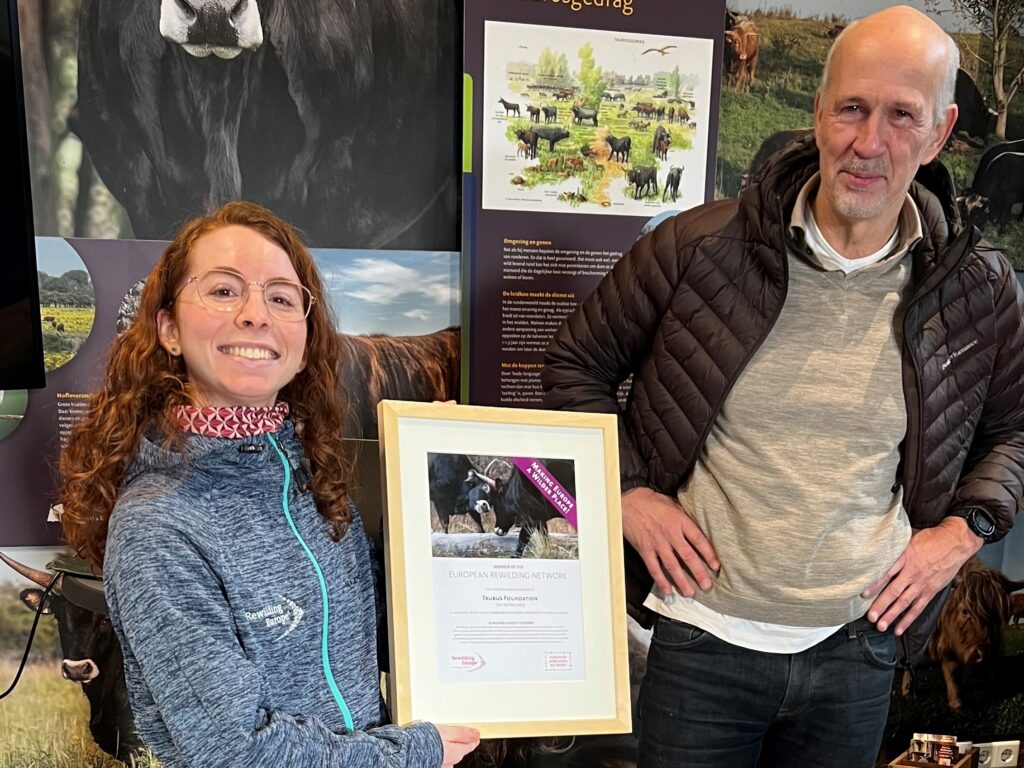
The ghost in the genes
In 2016, genomic sequencing allowed 34 ‘primitive’ cattle breeds to be ranked according to their genetic closeness to the extinct aurochs, providing direct scientific support for the Tauros Programme’s practice of combining Iberian and Podolian breeds (Podolia is a historic region in Eastern Europe) with aurochs-like physical traits. However, at that time, the genome of just one individual aurochs had been fully sequenced, so further analyses of more specimens could change our understanding of which genes different populations of aurochs did or didn’t have.
Indeed, there is every reason to suppose that this once wide-ranging species would have exhibited local adaptations, and so today, within the Tauros Programme, various back-breeding efforts are progressing in Spain, Portugal, Croatia, Czechia, Romania and the Netherlands.
Widening impact
“The European Rewilding Network has contacts all across Europe, and that’s important for us, because that’s where the animals are needed,” reflects Ronald Goderie from the Taurus Foundation. “Enlarging our existing network will help us connect to all kinds of people. We can learn from them. They can learn from us. I think that’s good. That’s what you need a network for.”
Ronald’s hope is that herds of Tauros can soon be reintroduced to wild landscapes across Europe, alongside other large herbivores like bison and wild horses, so that their collective influence can help to restore vital natural processes – something he feels will become ever more important as we seek to scale up rewilding efforts. At the same time, he believes the presence of these charismatic animals can transform our experience of wild places, supporting the development of nature-based businesses and fostering a growing sense of local pride.
A platform for exchange
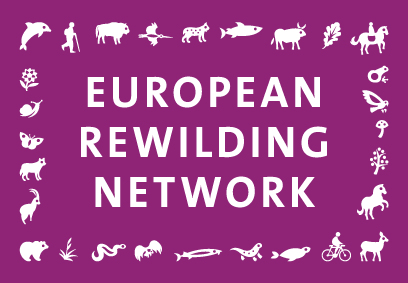 Today rewilding is gaining momentum as a progressive and effective approach to conservation in Europe. Underpinning this trend, the burgeoning European Rewilding Network continues to foster collaboration and amplify results.
Today rewilding is gaining momentum as a progressive and effective approach to conservation in Europe. Underpinning this trend, the burgeoning European Rewilding Network continues to foster collaboration and amplify results.
Founded by Rewilding Europe in 2013, the aim of the ERN is to enhance the efforts of each member by facilitating the exchange of skills, insight and experience. Members meet regularly, usually via webinar, while nature-based businesses can also apply to Rewilding Europe Capital, Rewilding Europe’s enterprise loan facility.
Rewilding Europe extends a warm welcome to all European rewilding initiatives that focus on practical, result-oriented rewilding and encourages them to apply for ERN membership.


